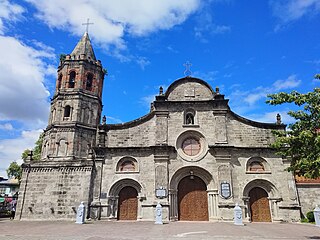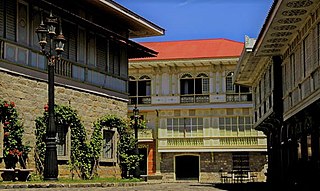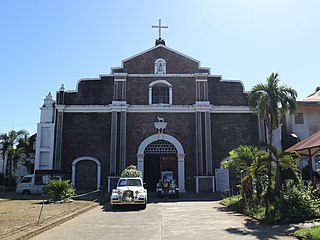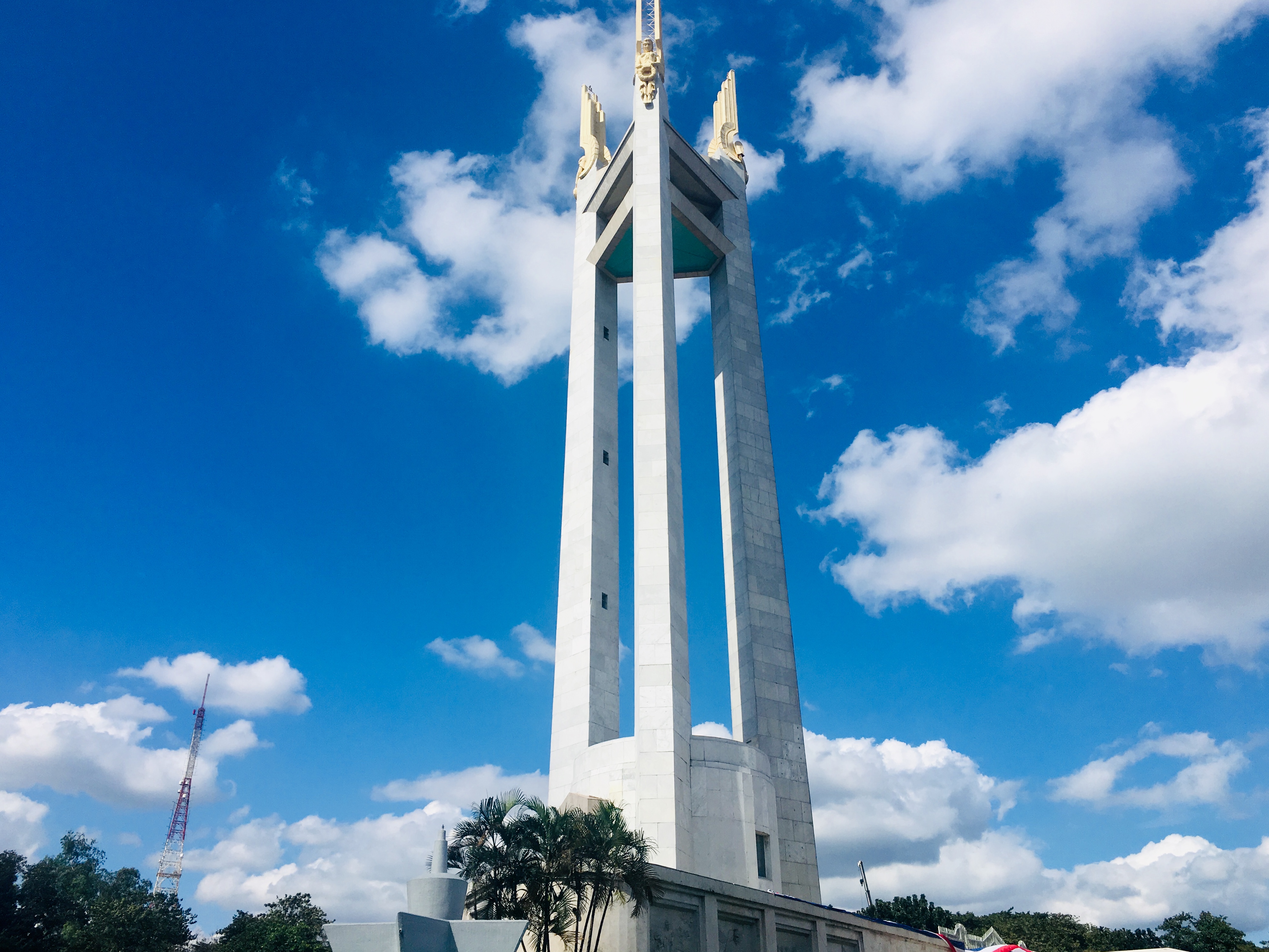
Las Piñas (Tagalog:[lasˈpiɲɐs], officially the City of Las Piñas, is a 1st class highly urbanized city in the National Capital Region of the Philippines. According to the 2020 census, it has a population of 606,293 people.

Bulacan, officially the Province of Bulacan, is a province in the Philippines located in the Central Luzon region. Its capital is the city of Malolos. Bulacan was established on August 15, 1578, and part of the Metro Luzon Urban Beltway Super Region.

Angeles, officially the City of Angeles, is a 1st class highly urbanized city in the Central Luzon region of the Philippines. According to the 2020 census, it has a population of 462,928 people.

Malolos is the historical site of the constitutional convention of 1898 that led to the establishment of the First Philippine Republic, led by Emilio Aguinaldo. Malolos was the site of the constitutional convention of 1898, known as the Malolos Convention, that led to the establishment of the First Philippine Republic, at the sanctuary of the Barasoain Church. The convent of the Malolos Cathedral served as the presidential palace at that time.

Guagua, officially the Municipality of Guagua, is a 1st class municipality in the province of Pampanga, Philippines. According to the 2020 census, it has a population of 128,893 people.

The architecture of the Philippines reflects the historical and cultural traditions in the country. Most prominent historic structures in the archipelago are influenced by Austronesian, American architectures.

The National Historical Commission of the Philippines is a government agency of the Philippines. Its mission is "the promotion of Philippine history and cultural heritage through research, dissemination, conservation, sites management and heraldry works." As such, it "aims to inculcate awareness and appreciation of the noble deeds and ideals of our heroes and other illustrious Filipinos, to instill pride in the Filipino people and to rekindle the Filipino spirit through the lessons of history."

The Philippine Registry of Cultural Property, abbreviated as PRECUP, is a national registry of the Philippine Government used to consolidate in one record all cultural property that are deemed important to the cultural heritage, tangible and intangible, of the Philippines. On June 11, 2018, the entries in the newly updated PRECUP was at 3,921. Additionally, 1,259 out of 1,715 LGUs, or 73 percent of LGUs have established local cultural inventories (LCI).

These lists contain an overview of the government recognized cultural properties in the Philippines. The lists are based on the official lists provided by the National Commission for Culture and the Arts, National Historical Commission of the Philippines, and the National Museum of the Philippines.

Historical markers are installed by the National Historical Commission of the Philippines (NHCP) and its predecessor agencies in the Philippines and places abroad that signify important and historic events, persons, structures, and institutions. The commemorative plaques are permanent signs installed by the NHCP in publicly visible locations on buildings, monuments, or in special locations. The NHCP also allows local municipalities and cities to install markers of figures and events of local significance, although these markers are barred from using the seal of the Republic of the Philippines.

The Saint Anne Parish Church, also known as Santa Ana Church or also known in its formal name as the Minor Basilica and Archdiocesan Shrine of St. Anne, is a Roman Catholic church and minor basilica located in Barangay Santa Ana, Taguig, Philippines. It is situated next to the Taguig River and across Plaza Quezon, where the statue of Manuel L. Quezon was erected when he was still serving as President of the Philippines. Saint Anne is the patroness of the church.

St. Andrew the Apostle Parish, commonly known as Bacarra Church is a Roman Catholic church located in the municipality of Bacarra, Ilocos Norte, Philippines under the jurisdiction of the Roman Catholic Diocese of Laoag.

The Malolos Historic Town Center is a historic district located in downtown Malolos City, Bulacan, Philippines, commonly called the Camestisuhan or Pariancillo District of Malolos. It was declared as such for its collection of Spanish and American-era houses and government structures, and for being the birthplace of the First Philippine Republic and the Malolos Constitution as well as having been the capital of the Philippines from 1898 to 1900. The National Historical Institute declared the downtown Malolos area officially as a National Historical Landmark and a Heritage Town on August 15, 2001.

The Quezon Memorial Shrine is a monument and national shrine dedicated to former Philippine President Manuel Quezon located within the grounds of Quezon Memorial Circle in Quezon City, Metro Manila. It also houses a museum at its base.


































































